Can you eat snake meat? The short answer is yes. While snakes are not that common in America, they are considered to be a source of protein in other parts of the world. It is especially sought after in Asia due to the perceived medicinal properties of the meat.
There are many edible snakes in North America. These can be captured in the wild or simply ordered from multiple sources.
Is Eating Snake Dangerous?
Eating snake in itself is not dangerous. However, many of the activities that go into acquiring snake meat can be extremely hazardous. Like eating a bear, you must be vigilant when collecting it.
Picking snakes that aren’t harmful can simplify the process of catching and cooking the meat. Still, if you’re unsure whether or not a snake is venomous, treat it like it is to be on the safe side.
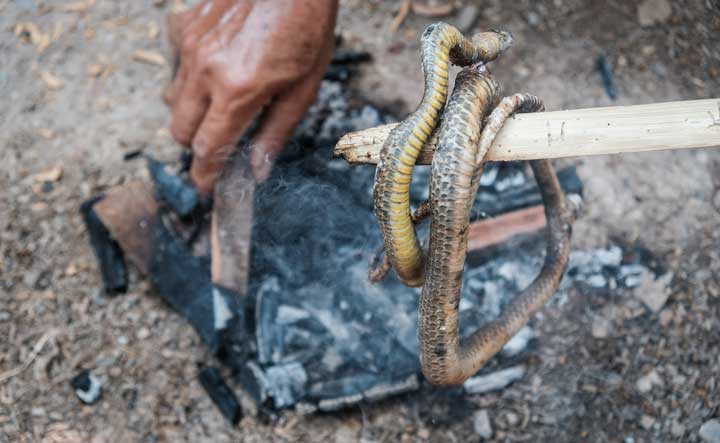
Which Snakes Are Edible?
While many snake species are indeed edible, it is important to note that some are not suitable for consumption. As long as you catch them and prepare them using the proper precautions and procedures, almost all snakes are edible, with a few exceptions. This includes both venomous and non-venomous snakes, but be aware that there are certain species, such as the Fer-de-Lance, which are best avoided due to their high toxicity and potential risks associated with consumption.
Some of the most popular snake options to eat are very venomous. Rattlesnake is a common meat sold in bulk for people to enjoy. It is widely considered one of the best tasting options in snake meat. People also eat less dangerous snakes like garter snakes and king snakes.
Larger snakes are easier to eat. Not only do you get more meat from them, but they are also easier to skin and debone when you have to prepare them.
Can You Eat a Venomous Snake?
Venomous snake meat is edible, but you must remove its head before eating so that you can consume the meat safely.
Snake venom is the most dangerous when it enters your bloodstream. If you remove the head and don’t puncture the glands, there is almost no danger from eating the snake. However, if you don’t get a clean-cut or eat the glands, you may find yourself in real trouble.
Disposing of a head can be tricky. In fact, some species of snake’s heads can remain active for hours after they are removed, and there have been multiple stories of decapitated heads biting people.
With that in mind, the wisest course of action is to burn or bury the head to avoid any of the risks associated with venom and fangs.
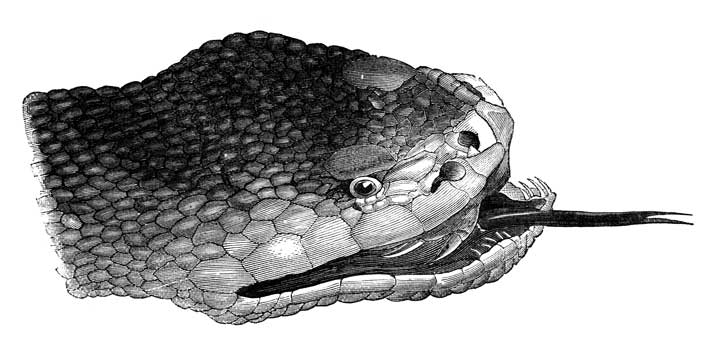
What Does Snake Meat Taste Like?
The quick and easy joke with this question is to say that it tastes like chicken. Yet, I find that snake meat usually has almost no taste on its own and often ends up reflecting the spices or ingredients I use with it.
What snake does offer is a distinct chewy texture. Even when prepared fresh, it will still be full of sinew, making it a very difficult meat to chew quickly.
The toughness of snake meat can be somewhat mitigated if you prepare it properly, but it never quite goes away completely.
Is it Healthy to Eat Snake?
Snake meat is an excellent source of protein and is high in many vitamins and minerals. It’s also not on the glycemic index as it contains no carbohydrates. However, it can still convert to glucose more readily than fats, so I wouldn’t rely on it as my only food source unless desperate.
A high-protein, low-fat diet in a prolonged survival situation can lead to what is called protein poisoning. In short, protein may be a macronutrient, but we need fat to be healthy. Relying on protein only for sustenance will starve your body of the other things it requires to survive.
That said, if you are in a survival situation, then snake meat can be a solid meal option, so long as it does not remain your primary source of nutrients for too long. Just make sure you have a way to get both fiber and fats, too, such as from nuts. The importance of fat cannot be overstated; without enough of it, your body would not function properly within a week.
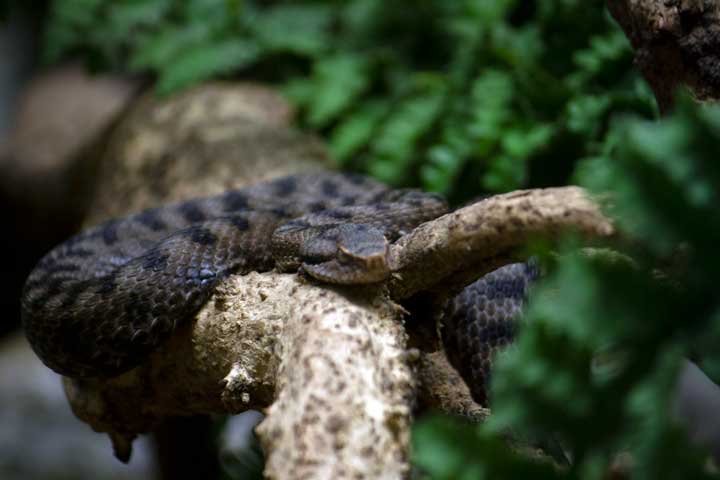
While nearly all carbohydrates can be left out of a healthy diet, fiber is the only one that arguably has a place. That’s because it can’t be broken down into sugar molecules or sucrose. In fact, fiber helps keep our blood sugar levels balanced and fills up a hungry belly better than empty carbs and glucose. Just be careful where you get your fiber from as many fiber-rich fruits are also heavy in sugar.
While fruits found in grocery stores is genetically altered for more sweetness leading to high levels of fructose, fruit found in the wilderness is growing in season and hasn’t been altered in any way, so it doesn’t contain much harmful sugar.
That’s one reason why nuts are a great option—they contain both healthy fats that we need to survive and fiber. They’re also easy to keep fresh, so you don’t need to worry about them going rancid as long as you keep them dry, preferably in an air-tight container. Coupled with protein, like that of snake meat, you can survive relatively well in a life-or-death situation.
Is Snake Meat Edible Raw?
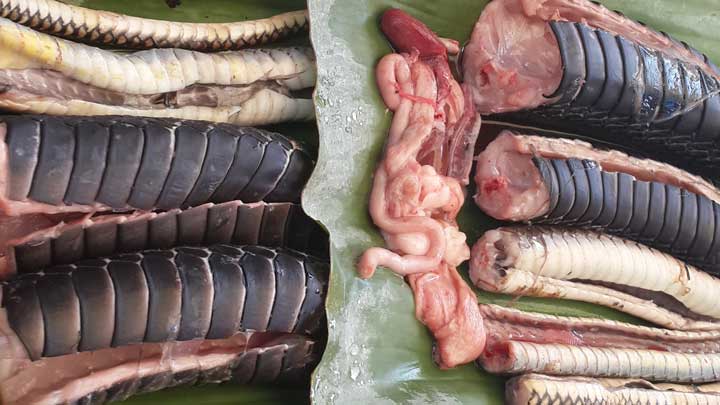
In most situations, you shouldn’t eat raw snake meat as there is a risk of parasites. However, in extreme survival cases, there may be no other option. Of course, if such a last resort is ever necessary, it’s important that you eat the snake immediately after you kill it. After all, the longer the meat is dead, the more bacteria will grow on it.
Unfortunately, even when taking such precautions, there is still the risk of getting sick.
How to Prepare Snake
You can catch snakes with traps or find them in long grass and hold them down with a long sturdy stick. Once you have one captured, you should remove its head well below the venom glands to ensure the meat is safe.
The next step is to skin the snake by first cutting it open at the anal vent. Then, using a knife, peel the scales away from the meat from the inside. You can save the skin for other uses if you like.
Next, you have to remove the guts. These can be retained for cooking, but they can be discarded if you don’t have a recipe that includes the organs. Finally, you want to make sure you clean the meat thoroughly before you start to cook it.
Some recipes recommend leaving the bones with the snake, but if you plan on having a campfire stew, it’s best to remove the bones at this point.
How to Cook Snake
After you have safely caught and killed the snake, you’ll need to skin it, as I outlined above. When it’s been cleaned, the easiest way to cook the meat is over a campfire. However, you can also “bake” it in some foil or even boil it.
As for spices, just about anything can complement a snake dish. A meal prepared with snake will often reflect the flavors of the herbs, so you can tailor your additions to make something you can enjoy. I suggest hot sauce at the very least, but there have been plenty of times where I have eaten it plain out of necessity.
Some people make snake jerky, but since snake meat is already on the side, that may make this an extremely challenging meal to have.
Is Snake Meat Red or White?
As snakes are reptiles, they are classified as white meat.
To put it simply, red meat comes from poultry and mammals. Everything else (fish, reptile, etc.) is considered white. The difference in meat type also deals with the amount of myoglobin in the meat. The exception is usually breast meat from fowl, which has less myoglobin.
Can You Eat Snake Eggs?
You can safely eat snake eggs, but they may not look exactly the way you think they do. In particular, many egg-laying snakes don’t create hard shells. That means that snake eggs can often be soft on the outside and don’t need to be cracked open.
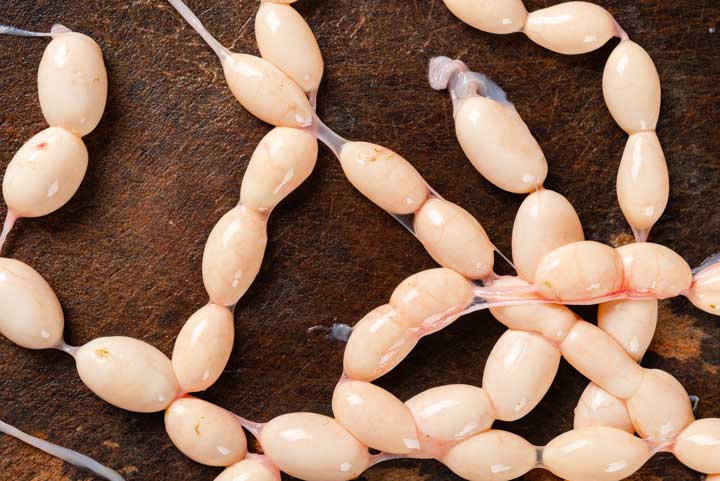
Snake eggs are a great source of protein with the added benefit of fat, vitamins, and minerals, like calcium and magnesium. In fact, eating just two eggs a day can give you anywhere from 10 to 30% of your daily vitamin needs.
If you are collecting the eggs in the wild, make sure to look out for the mother. Although most snakes don’t stay with their eggs, they may still be somewhere in the area.
If you plan on eating a snake egg, you will want to make sure you cook it first. Like all eggs, if you eat them raw, they can cause you to have stomach problems and make you sick.
You can boil the eggs whole or puncture the sack and eat them like a chicken egg. The consistency may seem off if you haven’t tried them before, but I find that, if hungry enough, just about anything can be palatable.
Final Thoughts
Snake meat can be interesting to eat, and for the most part, it is safe, especially when you prepare it correctly. By itself, snake is mostly tasteless, making it a great delivery system for other flavors while helping you add extra protein to your diet.
Be careful when you procure your snake meat, especially in the wild. It can be very dangerous, and you want to avoid getting bitten while you’re trying to get a bite.





If you eat a snake , is it can kill you? And what’s the cure for it after eating a snake and got really sick? Thank you please reply
Fer-de-Lance is not edible !?? Is it ?
Fer-de-Lance is a common name for the Bothrops asper, a venomous pit viper found in Central and South America. It is not considered an edible animal, and consuming it could pose serious risks. The snake’s venom is highly toxic and can cause severe symptoms, including pain, swelling, and even death. While it is true that some snake species are consumed as food, particularly in certain cultures, it is crucial to be cautious and knowledgeable about the species in question. In the case of Fer-de-Lance, it is best to avoid consumption due to its venomous nature.